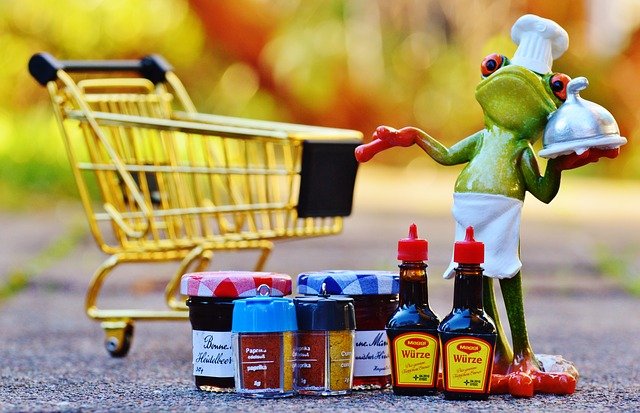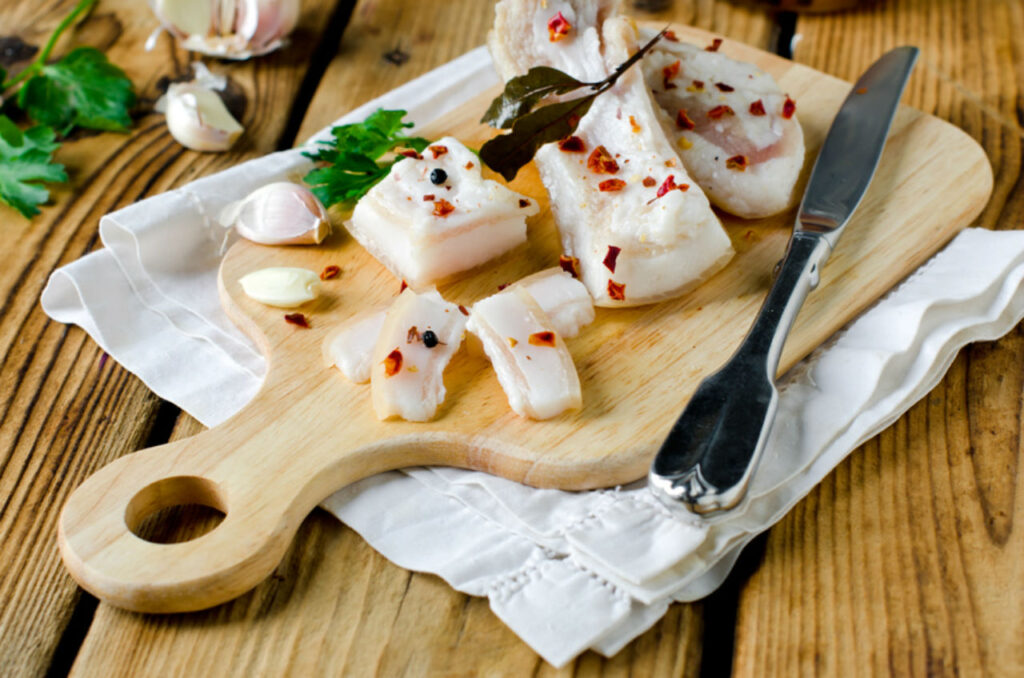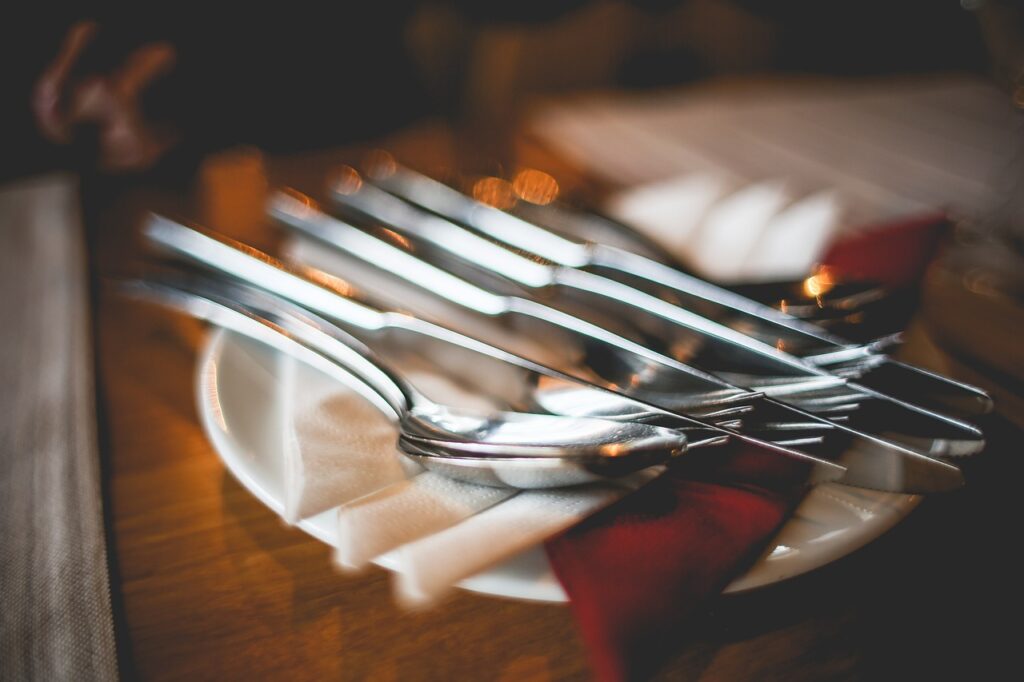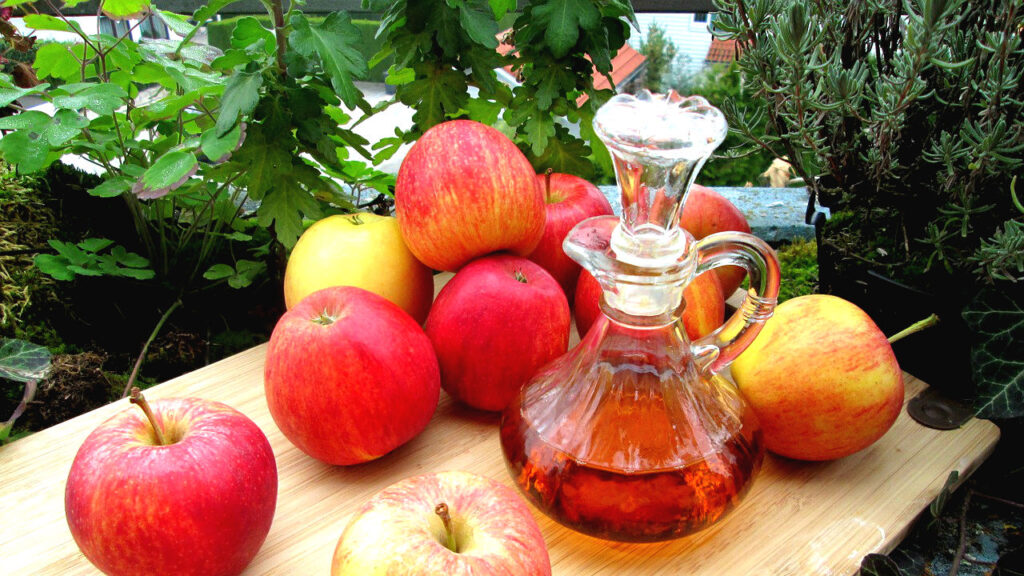Why You Need to Eat Organic Lard: 8 Simple Reasons
When people hear the word lard, they immediately imagine clogged arteries. This misconception has been largely debunked over the past many years. Lard is a saturated fat that can be safely consumed in moderation as part of a healthy diet.
- What is Organic Lard?
- History of Organic Lard
- Where to Find the Best Organic Lard
- 8 Reasons to Use Organic Lard
- #1 – Organic Lard is Heart Friendly
- #2 – Organic Free Range and Pastured Lard Can Be Rich in Vitamin D
- #3 – Lard is a Healthy Source of Cholesterol
- #4 – Lard is Perfectly Suited for Baking
- #5 – Lard Can Be Bought Locally
- #6 – Organic Lard is Neutral in Flavor
- #7 – Organic Lard is Sustainable and Environment-Friendly
- #8 – Organic Lard is Traditional
- Wrapping-Up
- Organic Lard: FAQs
- What are the benefits of eating organic lard?
- Is lard healthier than vegetable oils?
- Does lard raise cholesterol levels?
- What dishes can I cook with lard?
- Is lard better for high-heat cooking than olive oil?
- How can I store lard properly?
- What is the difference between lard and tallow?
- Where can I buy high-quality organic lard?
For greater context, check out the below article from Science Daily.
“Trans fats, But Not Saturated Fats Like Butter [or Lard], Linked to Greater Risk of Early Death and Heart Disease” – Science Daily
Lard is essentially pig fat. This fat can commonly be found in unrendered or rendered forms and can be found locally as well as in many grocery stores. The rendering process of lard is quite simple. Pork fat is steamed or boiled in water; after a separation process, the leftover fat is known as lard. The end product is then strained to remove any impurities.
Lard can also be made easily at home in a slow cooker or on the stovetop by adding water and then slowly cooking the water and pork fat until all the water evaporates.
Perhaps you remember your grandparents talking about all the lard their families used in decades past? Well, it’s been around for quite some time. It’s used worldwide as a cooking fat, and it results in more savory dishes and flakier pastries (it’s excellent for baking). The use of lard is increasingly becoming more popular in our day, especially among the more health-conscious.
What is Organic Lard?
As stated earlier, lard is a saturated fat derived from pork fat. Tallow, which is derived from beef fat, is very similar to lard in composition.
- Lard is mostly made up of fats, and these fats are known as triglycerides.
- Each triglyceride molecule consists of three fatty acid chains.
- The distribution of fatty acids in these chains sets one oil apart from another.
Interestingly, lard can significantly vary in fatty acid content, dependent upon the diet of the animals it was sourced from. For example, pigs in North America are mainly fed corn, unlike pigs raised in Spain, which are often fed acorns and peanuts, resulting in varying kinds of lard.
History of Organic Lard
In the early 1900s, lard was regularly used as a cooking oil across the globe. It was a key ingredient for most of the tasty and scrumptious recipes from generations past.
Lard is excellent for perfectly flaky pie pastries, melt-in-your-mouth biscuits, superior-tasting gravies, crispy fried chicken, mouthwatering popcorn, and much more.
In recent years, lard has just about completely disappeared from most kitchens due to an overemphasis on saturated fats being linked to heart disease. Also, the increasing popularity of more unhealthy oils like hydrogenated oils and trans-fats helped reduce lard’s popularity.
Regarding publicity, lard took a beating when Upton Sinclair’s novel, The Jungle, contained stories of fictional characters falling into lard rendering vats, only for the contaminated end-product to be sold later to the public. It portrayed that deaths of this sort in rendering plants went ignored and that lard was being sold without any consideration for workers or the consuming public.
Due to this stigma, lard fell in popularity. If that’s not enough, aggressive ad campaigns from companies like Crisco, with hydrogenated fat products, also locked in lard’s demise. What was once a staple and mainstay for family cooking lost popularity and was given the stigma of being nothing more than “poverty food.”
This was all primarily the result of effective marketing strategies that shifted demand from this mainstay of the family kitchen to newer and less healthy options, margarine being a key example.
Where to Find the Best Organic Lard
Lard is healthier when it comes from pigs that eat organic plants and feed. Containers of lard can be bought in supermarkets, but these products have usually been hydrogenated so that they will last longer. The store-bought brands are often heavily processed and may also be derived from pigs that were given harmful chemicals like ractopamine.
Why buy lard that’s been treated with chemicals, bleached, then deodorized with deodorizing agents? Always go organic when it comes to purchasing lard. There’s simply no reason not to.
Choose the minimally processed lards sourced from pigs fed USDA Certified Organic diets.
High-quality USDA Certified and minimally processed lard can easily be found online and at health-conscious grocery stores like Whole Foods. While it’s more expensive than the cheap fats found at the average grocery store, a little lard goes a long way.
8 Reasons to Use Organic Lard

There are so many benefits and reasons to use lard; too many to have an exhaustive list here. Yet, we’ll go ahead and at least give you a few reasons why you can feel good about using this wonderfully simple fat in moderation.
#1 – Organic Lard is Heart Friendly
As noted earlier, the idea that saturated fats are directly linked to the onset of heart disease is a myth. On the contrary, the onset of heart disease is linked to highly processed fats like margarine and other trans-fats, not to naturally saturated fats like lard. Lard and butter have traditionally been used massively in earlier times without any trouble.
This issue isn’t that all fat is bad. This issue is that unhealthy diets, including those high in fats, lead to a wide variety of negative health outcomes.
Lard isn’t the enemy when the following general rules are followed:
- Eat a diet plentiful in whole grains, fruits, nuts, beans, and vegetables (especially leafy greens and beans).
- Shift away from the Americanized diet, where meat always takes up the most significant portion of the plate. Instead, veggies and whole plant-based foods should be the main course.
- If or when you opt for eating meat, eat lean meats and cuts, as well as lean seafood options.
- Avoid processed foods and refined sugars.
- Use fats sparingly and in moderation. That means that you don’t need to add fat to every meal.
Various reliable sources found that saturated fats are indeed part of a healthy diet, including one study of over 300,000 individuals published by the American Journal of Clinical Nutrition (Source 1, Source 2). The issue has more to do with bad diet habits in general and less with using lard as one of many ingredients.
#2 – Organic Free Range and Pastured Lard Can Be Rich in Vitamin D
As long as your lard was sourced from pigs regularly exposed to sunlight, it will contain higher amounts of Vitamin D. Also, since Vitamin D requires fatty acids to help calcium’s absorption into the body, it’s wise not to limit their intake. Not only does lard improve the taste of your food, but it also may help supplement your vitamin D intake or calcium uptake.
#3 – Lard is a Healthy Source of Cholesterol
Studies show that saturated fats [like lard] increase HDL cholesterol levels. The increase in HDL cholesterol is associated with a decreased risk of cardiovascular disease in this study. That being said, HDL isn’t the only factor in a decreased risk of heart disease because other genetic factors also come into play.
Whatever the case, the average individual can consume lard and other fats in moderation. The only things that should be eaten in abundance are whole plant-based foods.
#4 – Lard is Perfectly Suited for Baking
If you can occasionally appreciate a good biscuit, try using lard in your recipe next time. Whether you’re preparing pastries, biscuits, pie crusts, or cookies, implementing lard into your recipes makes for excellently tasting baked goods. Varying the kinds of fats you use in your baked goods will also allow you to experiment with their differing taste qualities and characteristics.
Personally, I really enjoy alternating fats from time to time when I bake because it’s amazing how different the results can be. For example, if you make homemade brownies with coconut oil one week, try making them with lard the next time you make them. I absolutely love making them with both oils, but I can choose which fat I want to use depending on which taste I prefer at any given time.
#5 – Lard Can Be Bought Locally
If you’re concerned about decreasing your carbon footprint, buy lard from your local pig farmer. Supporting local farmers is an excellent way to do business with those trying to provide for their families.
Farming isn’t easy nowadays, so support local products from local farmers whenever you can. Also, you may even be able to take a trip to your local farm to see how they raise their pigs so that you know what you’re getting. Better yet, you could purchase unrendered pork fat from them (very cheap) and render the lard yourself.
It’s always fun to find out how things are made so that you don’t become disconnected from reality, which often happens in our instant gratification society. Local farms are excellent places to learn about how the food we eat gets to the table. Hopefully, the local farms where you live provide good examples of the process.
#6 – Organic Lard is Neutral in Flavor
While some people use coconut oil because it is heat-stable cooking oil, it has a unique flavor that some may not like all that much or may not be appropriate for specific recipes. So, if you need a neutral-flavored cooking oil, lard should be high up there on your list of flavorless oil choices.
Lard is perfect for deep frying and sautéing due to its high smoke point. Using organic lard results in a perfectly browned crust on vegetables and meats without any distinct flavor. Instead, it seems to enhance the flavors already in any given dish. Since it’s neutral in flavor, organic lard is also perfect for baked goods, as noted earlier. That’s right, it won’t make your cherry pie taste like ham, promise.
#7 – Organic Lard is Sustainable and Environment-Friendly
If you’re not already purchasing organic oils, you have no idea whether or not they’ve been made from genetically modified organisms (GMOs) or were sourced from crops that were heavily sprayed. Oils like organic lard are a big improvement over conventional and “natural” run-of-the-mill cooking oils at the grocery store.
Also, since lard comes from pigs (which can thrive almost anywhere), you’re investing in a sustainable production process. If you’ve never seen pasture-raised pigs, you should probably know that they greatly help the environment. Granted, they will tear up vegetation and grass quickly so that it won’t look pretty. But, by tearing up topsoil and foraging, they help fertilize the ground naturally.
Purchasing sustainably raised organic lard is a great way to say “NO” to a conventional market that contributes to hundreds of thousands of pesticide-ridden fields and the thriving preservative, antibiotic, and chemical market in the meat production business.
#8 – Organic Lard is Traditional
Over the centuries, pork fat has been used time and time again. Thankfully, in recent times, there seems to be a return to simplicity in many areas of life. There’s a certain excitement and enticement when it comes to thinking about rendering fat the way our great-grandparents did when they were young.
Believe it or not, returning to the old ways is actually beneficial in many cases. Continuing the legacy of making and using this healthy fat should appeal greatly to anyone interested in living a natural and healthy life.
Wrapping-Up
Now that we’ve debunked a few myths, listed many benefits, and pondered times past, you should know why lard should once again be a food staple in your family. Better yet, since it’s so easy to render, why not show your children how easy it is to make by rendering it with them, just like your grandparents’ parents showed them when they were children?
Stay lean, eat primarily vegetables and fruits, and eat lard in moderation.
Organic Lard: FAQs
What are the benefits of eating organic lard?
Eating organic lard provides healthy fats and nutrients. Lard from pasture-raised pigs contains vitamin D, vitamin E, and antioxidants not found in conventionally-raised pork fat.
Is lard healthier than vegetable oils?
Yes, lard is more stable at high heat and contains more antioxidants than vegetable oils, making it a healthier choice for cooking.
Does lard raise cholesterol levels?
No, studies show lard does not negatively impact cholesterol levels. The high monounsaturated fat content may help lower LDL cholesterol.
What dishes can I cook with lard?
You can use lard for cooking eggs, sautéing veggies, baking pie crusts, roasting potatoes, and making tamales, among many other uses.
Is lard better for high-heat cooking than olive oil?
Yes, lard has a very high smoke point, which makes it excellent for frying and cooking at high heat.
How can I store lard properly?
Store lard in an airtight container in a cool, dark place or in the refrigerator. It can be kept refrigerated for up to a year.
What is the difference between lard and tallow?
Lard comes from pigs, while tallow comes from cattle. Both contain vitamins, minerals, and stable saturated fats.
Where can I buy high-quality organic lard?
Look for organic lard from pastured pigs at health food stores, local farms, or online retailers like Fatworks.


